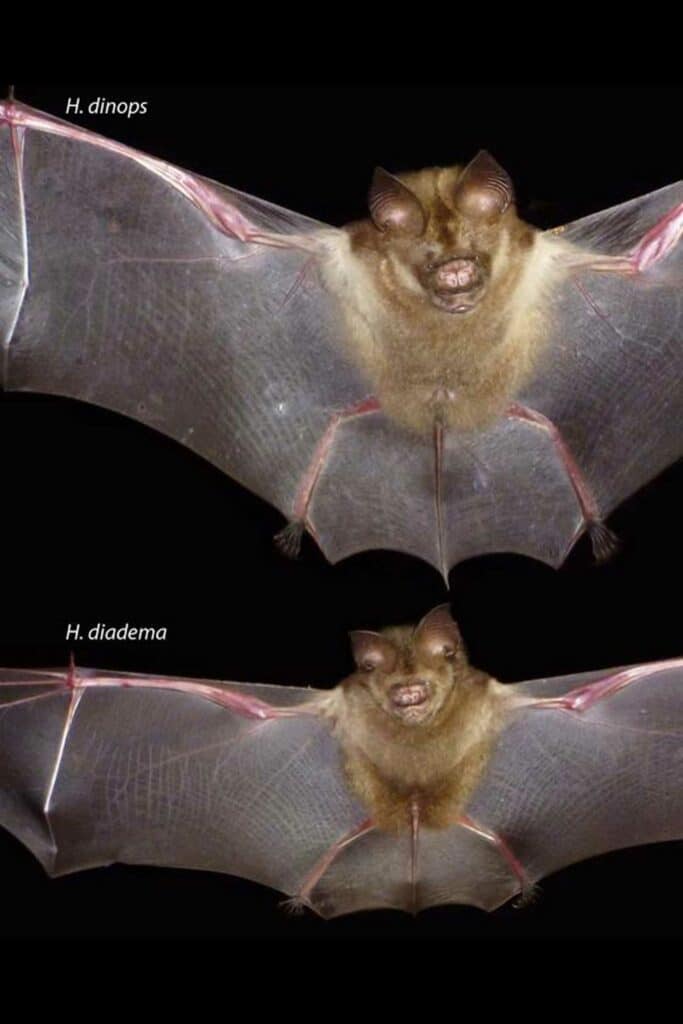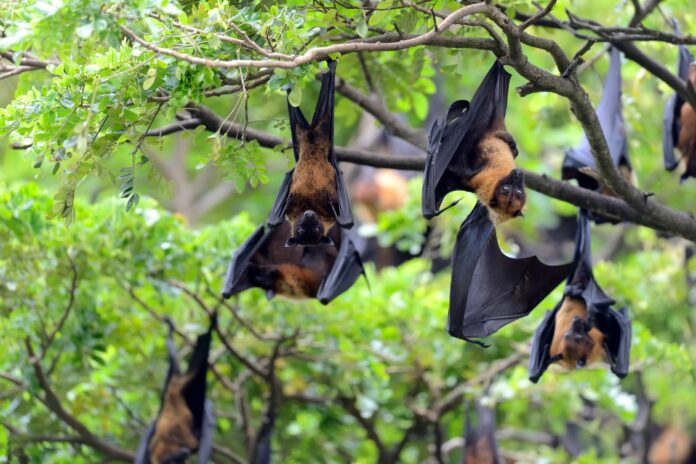Body size is one crucial physical characteristic frequently used to draw borders between species in closely related taxa. However, while having separate evolutionary and geographic beginnings, body size can evolve concurrently and achieve comparable final states, leading to incorrect assumptions about evolution.
A University of Melbourne researcher has spotted a rare evolutionary phenomenon occurring rapidly in real-time in bats living in the Solomon Islands.
Scientists report that this unique kind of parallel evolution is exemplified by two populations of leaf-nosed bats that were previously believed to be distinct species despite their drastically different bodies. Parallel evolution occurs when similar features independently evolve in different populations living in similar circumstances.
The smaller bat, Hipposideros diadema, is widespread across six main and numerous smaller islands. It’s also commonly found in Southeast Asia, Papua New Guinea, and northern Australia. The larger bats, named H. dinops or Fierce Leaf-Nosed Bat, were identified in 1905 and are exclusive to the Solomon Islands. Both sizes of bats coexist on most islands, all of which share similar forested habitats.

Hipposideros diadema, the more miniature bat, is found throughout six major and many smaller islands. It is also frequently found in portions of northern Australia, Papua New Guinea, and South East Asia. The larger bats are unique to the Solomon Islands and are known as H. drops or Fierce Leaf-Nosed Bats. They were first discovered in 1905. Most islands coexist with bats of both sizes because their forested environments are similar.
Dr Tyrone Lavery said, “Although they are very different sizes, the bats’ DNA is very similar. They use very different sonar frequencies, probably eat different food, and even when living in the same cave together, they don’t interbreed. That is why no one has ever questioned whether they were different species.”
“Despite their independent origins, each group of larger bats has evolved to look the same, averaging more than double the weight of the small bat. Our research suggests the rapid and repeated evolution of larger-bodied bats from smaller bats, each happening independently on separate islands.”
“When we created family trees using the bats’ DNA, we found that what we thought was just one species of large bat in the Solomon Islands was a case where bigger bats had evolved from the smaller species multiple times across different islands.”
This is the first instance of real-time documentation of simultaneous evolution in mammals, having only been seen a few times previously in different populations of the same species.
In some regions of the world, populations that are geographically far from one another yet inhabit comparable environments—such as several islands or lakes—have been seen to exhibit parallel evolution. Convergent evolution is a popular kind of parallel evolution. For instance, wolves and thylacines are two distinct species with different ancestries that have developed independently to resemble each other. However, according to Dr. Lavery, it is uncommon to witness the same evolutionary process followed by two separate populations of the same species.
Dr. Lavery said, “Something powerful is pushing or selecting for these big bats, and it is strong enough to happen multiple times on different islands. We think these larger bats might be evolving to take advantage of prey that the smaller bats aren’t eating. Although they could probably interbreed, they don’t for some reason.”
“Across the islands, the sonar frequencies of larger bats are lower and suited to hunting bigger prey, while the smaller bats use a higher frequency. This probably means the larger bats are eating larger insects or frogs.”
Dr. Lavery measured 103 bat specimens from the Australian, Queensland, University of Kansas, and Bernice Pauahi Bishop Museums in Hawaii. She also discovered no body size overlap between the two groups; the smaller “species” could always be distinguished from the larger bats.
“Over time, larger body size may have been part of behavioral and physical adaptations needed to hunt larger prey. This might mean the bigger and smaller bats no longer recognize each other as mates, so they live separate lives.”
Dr Lavery said this parallel evolution pattern in leaf-nosed bats had been observed in the Solomon Islands on Guadalcanal and in the Western Province, and more research was needed to see if the same pattern was repeated on other islands.
“We may think of evolution as a prolonged process, but it can happen rapidly when the conditions are right and two groups are separated and stop interbreeding. They can begin to evolve on different pathways,” he said.
“Islands are famous for helping us observe and understand how species evolve in real-time. They’re also places that are very vulnerable to the types of disturbance created by humans. It’s important that we look after these incredible landscapes in Solomon Islands before we lose these stories even before we find them.”
Journal Reference:
- Tyrone H Lavery, Devon A Deraad et al. Parallel evolution in an island archipelago revealed by genomic sequencing of Hipposideros leaf-nosed bats. Evolution. DOI: 10.1093/evolut/qpae039
